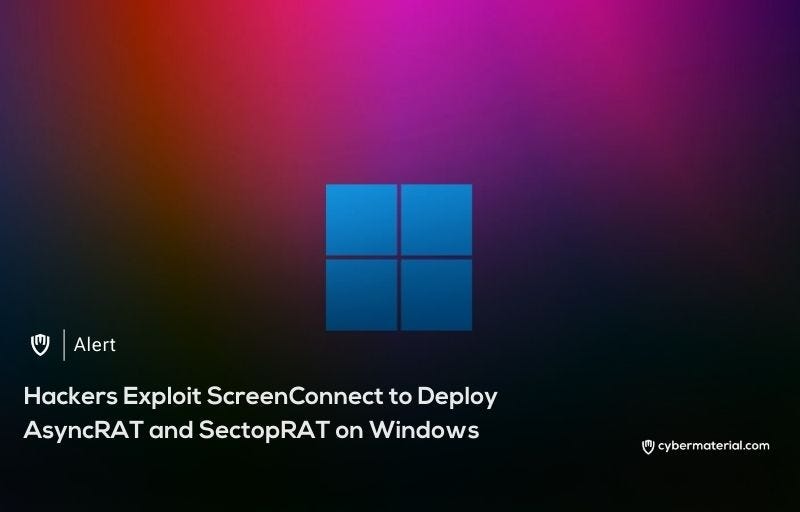
Cybercriminals are increasingly leveraging legitimate remote monitoring and management (RMM) tools like ScreenConnect to deliver malicious payloads, marking a concerning shift in attack strategies. Microsoft recently uncovered that threat actors are using ScreenConnect, typically employed for persistence or lateral movement, as a direct delivery mechanism for AsyncRAT malware. This approach is often facilitated through tech support scams, where unsuspecting victims are tricked into granting remote access under the guise of troubleshooting fabricated issues. Once access is secured, AsyncRAT is installed, allowing attackers to perform data exfiltration, system surveillance, and execute malicious commands remotely.
In addition to the misuse of ScreenConnect, attackers are also distributing SectopRAT, another sophisticated malware, using SEO poisoning and typosquatting techniques. SEO poisoning involves manipulating search engine rankings to ensure malicious websites appear prominently in search results, tricking users into clicking harmful links. Typosquatting, on the other hand, exploits minor typographical errors in URLs to redirect users to fraudulent sites. SectopRAT is particularly dangerous due to its ability to operate on a hidden virtual desktop, enabling attackers to steal browser data and cryptocurrency wallet information without raising suspicion.
Both AsyncRAT and SectopRAT demonstrate the increasing creativity and adaptability of modern cybercriminal operations. By abusing trusted tools and leveraging advanced distribution techniques, attackers are able to bypass traditional security measures with alarming success rates. These campaigns emphasize the importance of user awareness and robust cybersecurity practices to prevent unauthorized access and data compromise. Organizations must prioritize endpoint protection, employee training, and vigilant monitoring of RMM tool usage to mitigate such risks effectively.
As cyber threats continue to evolve, it is critical for both individuals and organizations to remain proactive. Verifying the legitimacy of tech support interactions, exercising caution when clicking on search engine results, and keeping all systems and software updated are essential steps in defending against such sophisticated attacks. The misuse of trusted tools like ScreenConnect, coupled with creative social engineering tactics, highlights the persistent need for vigilance and a multi-layered approach to cybersecurity.
Reference:
The post Hackers Use ScreenConnect to Deploy AsyncRAT first appeared on CyberMaterial.


